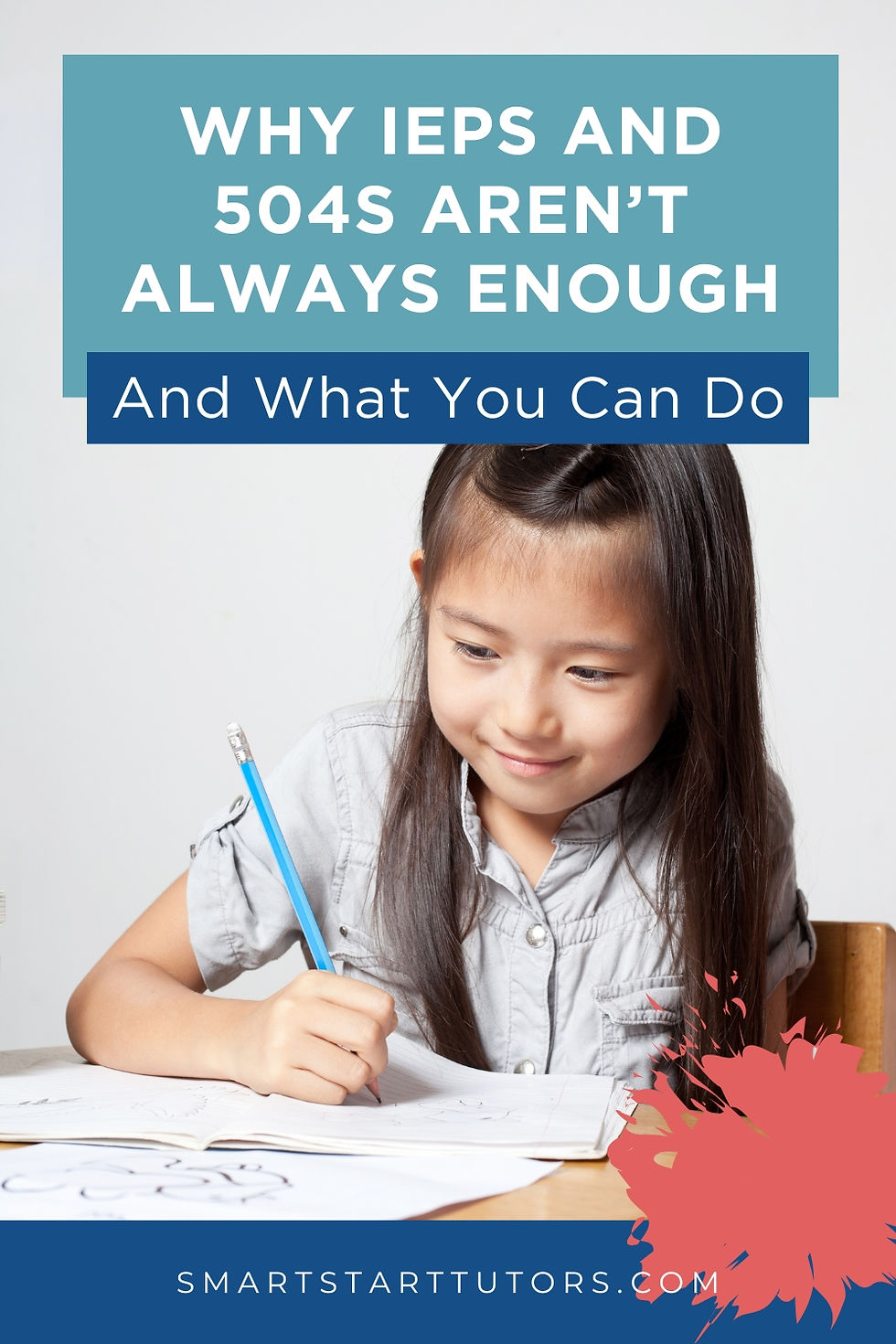Reading Grade Levels: Signs Your Child May Be Behind
- smartstarttutorsin
- Aug 29
- 3 min read
As a parent, it can feel nearly impossible to answer the question: “Is my child where they should be with reading?” You might get vague feedback at parent-teacher conferences, see some benchmark scores on a report card, or hear “they’re doing fine,” but still feel unsure.
If you're heading into fall wondering whether your child is truly on the right reading grade levels, you’re not alone. And you’re asking a very important question.
At Smart Start Tutors, our Reading Specialists work with children in grades K–5 who are behind in reading, whether slightly or significantly, and often their parents suspected something was off long before anyone said it out loud.

What Does “On Grade Level for Reading” Actually Mean?
“Reading grade levels” refer to how well a child reads compared to the average expectations for their current grade.
But here's the truth: Most people don't say out loud: Grade-level reading can vary wildly from one school or district to another.
Still, there are some general milestones we look for:
Kindergarten
Knows most letters and sounds
Starts to blend sounds into simple words (like cat, hat)
Understands basic story structure (beginning, middle, end)
First Grade
Reads simple sentences independently
Recognizes high-frequency words (like the, and, said)
Begins to read for meaning
Second Grade
Reads short paragraphs fluently
Uses phonics strategies and context clues to decode unfamiliar words
Can retell a story with details
Third Grade and Beyond
Transitions from learning to read → reading to learn
Reads chapter books with understanding
Summarizes, predicts, and interprets text
If your child is struggling to hit these milestones—or if you’ve heard phrases like “they’ll catch up later”—don’t ignore that little voice in your head. You know your child best.
Why Some Kids Fall Behind in Reading (And It’s Not Your Fault)
There are many reasons a child may not be on the right reading grade level, including:
Dyslexia or other learning differences
ADD/ADHD affecting attention and focus
Auditory or visual processing issues
Gaps in phonics instruction
Missed learning time due to illness or pandemic disruptions
Sometimes a child just learns differently—and needs a different approach.
What to Do If You're Unsure
If you’re not getting clear answers from school, here are steps you can take:
Ask for a Reading Assessment
Most schools can provide some form of diagnostic data (such as DIBELS, iReady, Fountas & Pinnell levels). Ask for it in writing and don’t be afraid to ask questions about the results.
Trust Your Instincts
If you see your child guessing at words, avoiding reading, or showing signs of frustration, take it seriously. Avoiding the issue won’t make it go away.
Get Outside Support
A child who is slightly behind now can fall even further behind by spring. That’s where we come in.
How We Help Close the Reading Gap
We work with students in grades K–5 who are struggling with their reading grade level, whether they’ve been diagnosed with something like dyslexia, or they just haven’t been able to “click” with traditional instruction.
One-on-one virtual sessions tailored to your child’s needs
Explicit phonics instruction and evidence-based strategies
Support for kids with IEPs, 504s, or no formal plans at all
Progress updates and parent-friendly strategies to support learning at home
We don’t just help kids catch up; we help them believe in themselves again. Schedule a call to learn more!





Comments